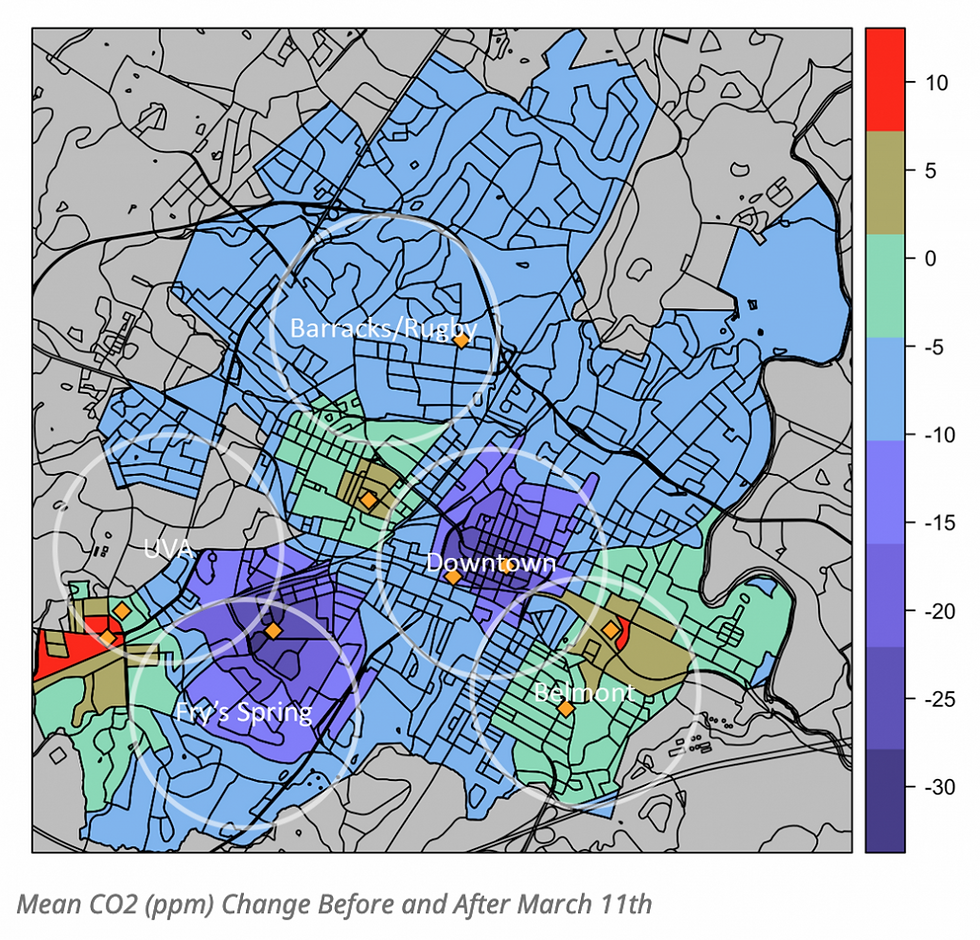UVA School of Data Science Capstone: Deployment of a LoRaWAN-Based IoT Air Quality Sensor Network
- Abigail Cox
- Jun 11, 2020
- 3 min read
For the last academic year, we worked with researchers from the University of Virginia to use the Internet of Things in examining air quality in the City of Charlottesville. We were honored to do this work as part of the capstone program at the UVA School of Data Science. The team, led by students James Howerton and Ben Schenck was supported by myself and UVA researchers Jon Kropko, Luis Felipe Rosado Murillo, and Jon Goodall.
For us, we had a few main goals…
Provide a practical use case for the Cville Things Network
Raise the issue of urban air quality as a point of discussion locally
Identify potential “hot spots” or areas where air quality is significantly worse
Raise awareness for the citizen science that IoT can facilitate
Support student leaders with a hands-on community-based research opportunity
The team was asked to provide a replicable prototype air quality sensor that connected to the Cville Things Network, a free and community supported IoT network in Charlottesville. Their final product was a fantastic example that included clear circuit diagrams for replication by citizen scientists.

The entire box is replicable at a price point of $150 and included the following: feather-m0-board, jumper wires, mini-breadboard, watertight box, particulate matter sensors, CO2 sensor, voltaic battery portable battery, voltaic solar panel, voltaic micro USB connector. The boxes connect to the free LoRa network in Charlottesville, assuming there is one close enough.
With the design complete, the team deployed a network of 10 boxes throughout the City. The team (and those hosting the boxes) soon found out that even with the ultra low powered LoRa technology, keeping the boxes charged was a real concern, even with its best efforts of including a solar panel as part of the box.
Of course, this team was committed to sharing the data collected in this project as open data and it can be found in all of its glory here. They also included the full code that supports their analysis here. In the analysis, which can be found here the team went through data cleaning, calibration, anomaly detection, distance correlation, and data visualization. They were even able to visualize the decrease in C02 due to social distancing at the outbreak of the COVID-19 epidemic.

Beyond their analysis, we appreciate this team for identifying numerous takeaways. The first of which is that we need to continue building out our Cville Things Network reach. We need more gateways, we need them overlapping, and we need a system to help keep them running. Our grassroots community also needs a code of ethics. Next, we learned what many before us have learned the hard way… even with low power devices battery consumption will be an issue. It’s tricky and requires patience, expertise, and testing. Similarly, affordable sensors, those that would traditionally power a citizen science approach to air quality are of varying quality and in some cases just inaccurate. We also learned a lot about the need for consistent environmental data. Our community wants to know more about how well we’re taking care of the environment but data is sparse, lacks uniformity, and challenging to collect.
We value this capstone team for helping to raise these questions and believe they will help our community and others begin to think more about the role of IoT in helping us learn more about the environment and how to protect it.





Comments